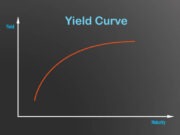
What is a salary reduction contribution
A salary reduction contribution is an arrangement between an employer and an employee whereby the employee agrees to have a portion of their salary set aside into a retirement account before taxes are deducted. This has the effect of reducing the employee’s taxable income, which can result in significant tax savings. Salary reduction contributions are often made to 401(k) or 403(b) plans, but can also be made to other types of retirement accounts, such as individual retirement accounts (IRAs). Employers may choose to match a portion of the employee’s salary reduction contribution, making it an even more beneficial way to save for retirement.
How does a salary reduction contribution work
A salary reduction contribution is a type of contribution that an employee makes to their retirement plan from their paycheck, typically on a pre-tax basis. This contribution is made in addition to any employer contributions that may be made to the plan. Salary reduction contributions can be made to a 401(k) plan, a 403(b) plan, or a 457(b) plan. Employees who make salary reduction contributions may be eligible for a matching contribution from their employer, up to a certain percentage of their salary. Salary reduction contributions can have a significant impact on an employee’s retirement savings, and can help to maximize the employer’s matching contribution.
What are the benefits of making a salary reduction contribution
This type of contribution can be an effective way to save for retirement because it allows you to contribute pretax dollars, which can help to lower your overall taxable income. In addition, many employers offer matching contributions, which can further boost your savings. Another benefit of salary reduction contributions is that they can help to reduce your current tax liability. This is because the amount that you contribute is subtracted from your taxable income, which can result in a lower tax bill. Finally, salary reduction contributions can be a convenient way to save for retirement, as the funds are automatically deducted from your paycheck. For all of these reasons, making a salary reduction contribution can be an advantageous way to save for retirement.
What are the tax implications of making a salary reduction contribution
There are a number of tax implications to consider when making a salary reduction contribution. Firstly, the amount contributed will be deducted from your gross salary, meaning that you will pay less income tax on your salary. Secondly, the contributions made will be invested in a tax-advantaged account, such as a 401(k) or IRA, which means that the investment growth will not be subject to taxation. Finally, when you make withdrawals from the account in retirement, the withdrawals will be taxed at your marginal tax rate. Therefore, making salary reduction contributions can have a significant impact on your overall tax liability.
When is the best time to make a salary reduction contribution
Salary reduction contributions are a great way to save for retirement, but timing is important. If you reduce your salary early in the year, you’ll have more money to invest and more time for those investments to grow. However, if you wait until later in the year, you may be able to take advantage of catch-up provisions that allow older workers to contribute more. Ultimately, there is no single best time to make a salary reduction contribution – it depends on your individual circumstances. However, it’s important to consider the tax implications of each option and make sure that you’re maximizing your retirement savings.
How much can you contribute to a salary reduction contribution plan
The answer to this question depends on a number of factors, including your income, the rules of the plan, and the amount you are required to contribute. For example, if you earn $50,000 per year and the plan requires you to contribute 10% of your salary, you would be able to contribute up to $5,000 per year. However, if your income increases or the rules of the plan change, your contribution limit may also change. Therefore, it is important to stay up-to-date on the latest information in order to maximize your contributions.
What are the investment options for a salary reduction contribution
A salary reduction contribution is an investment where you elect to have a portion of your salary withheld and sent to an investment account rather than received as part of your paycheck. This type of contribution can be made to a 401(k) retirement account, a 403(b) tax-sheltered annuity, or a 457 deferred compensation plan.
Salary reduction contributions have the advantage of being made with pretax dollars, which can help to lower your taxable income. In addition, many employer-sponsored retirement plans offer matching contributions, which can further increase the potential return on your investment. When making a salary reduction contribution, it is important to consider your investment options carefully in order to maximize the return on your investment.
Many employer-sponsored retirement plans offer a variety of investment options, including stock and bond mutual funds, index funds, and target-date funds. You should consult with a financial advisor to determine which investment option is right for you based on your individual goals and risk tolerance.
How to withdraw funds from a salary reduction contribution account
If you’ve ever wondered how to withdraw funds from your salary reduction contribution account, the process is actually quite simple. First, you’ll need to contact your employer and let them know that you’d like to make a withdrawal. Once your employer has processed your request, they will send you a check for the amount of money that you’ve requested. Alternatively, some employers may allow you to direct deposit the funds into your personal checking or savings account. In either case, it’s important to keep in mind that withdrawals from a salary reduction contribution account are subject to income tax. As such, you may want to consult with a financial advisor before making any withdrawals.

































